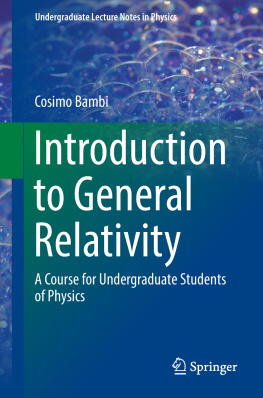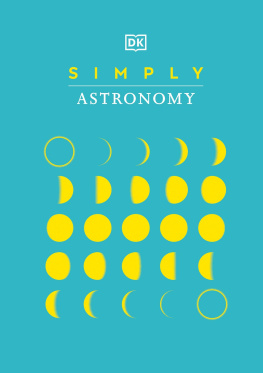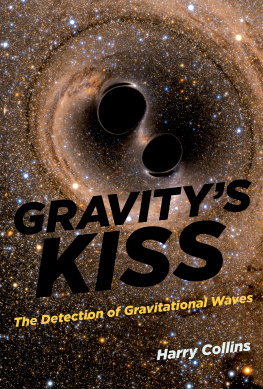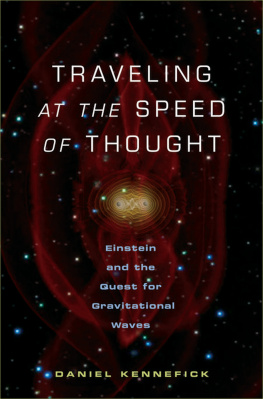Editors
Cosimo Bambi
Department of Physics, Fudan University, Shanghai, China
Stavros Katsanevas
Universit de Paris and European Gravitational Observatory, Paris, France
Konstantinos D. Kokkotas
Institute for Astronomy and Astrophysics, Eberhard Karls University of Tbingen, Tbingen, Germany
ISBN 978-981-16-4305-7 e-ISBN 978-981-16-4306-4
https://doi.org/10.1007/978-981-16-4306-4
Springer Nature Singapore Pte Ltd. 2022
This work is subject to copyright. All rights are reserved by the Publisher, whether the whole or part of the material is concerned, specifically the rights of translation, reprinting, reuse of illustrations, recitation, broadcasting, reproduction on microfilms or in any other physical way, and transmission or information storage and retrieval, electronic adaptation, computer software, or by similar or dissimilar methodology now known or hereafter developed.
The use of general descriptive names, registered names, trademarks, service marks, etc. in this publication does not imply, even in the absence of a specific statement, that such names are exempt from the relevant protective laws and regulations and therefore free for general use.
The publisher, the authors, and the editors are safe to assume that the advice and information in this book are believed to be true and accurate at the date of publication. Neither the publisher nor the authors or the editors give a warranty, expressed or implied, with respect to the material contained herein or for any errors or omissions that may have been made. The publisher remains neutral with regard to jurisdictional claims in published maps and institutional affiliations.
This Springer imprint is published by the registered company Springer Nature Singapore Pte Ltd.
The registered company address is: 152 Beach Road, #21-01/04 Gateway East, Singapore 189721, Singapore
Preface
Gravitational waves are ripples of spacetime propagating at the speed of light. They were among the first predictions of the theory of general relativity of Albert Einstein, but for a few decades, the community discussed whether these gravitational waves were a real physical phenomenon or only an artifact of the coordinate system.
The puzzle was solved only at the end of the 1950s, and immediately after Joseph Weber started developing the first gravitational wave detector. In 1974, Russell Alan Hulse and Joseph Hooton Taylor, Jr. discovered the first binary pulsar, which led to the first indirect evidence of the existence of gravitational waves. Accurate radio observations of the HulseTaylor binary system in the 1970s showed indeed that the decay of its orbital period matched well with the predictions of general relativity for the emission of gravitational waves. Such a discovery, which led Hulse and Taylor to receive the 1993 Nobel Prize in Physics, boosted the efforts to develop facilities for the direct detection of gravitational waves.
In February 2016, the LIGO-Virgo collaboration announced the first direct detection of gravitational waves: the signal was produced by the coalescence of two black holes with masses of 29 and 36 solar masses and the event was observed on 14 September 2015. Rainer Weiss, Kip Thorne, and Barry Barish received the 2017 Nobel Prize in Physics for their contribution in such a breakthrough.
On August 17, 2017, the detection of another type of event a neutron star merger triggered a follow-up campaign with about 100 observatories detecting signals using electromagnetic messengers ranging from high energy photons to visible light and radio waves. In particular, the quasi-simultaneous detection of gravitational waves from a binary neutron star and of a gamma-ray burst solved the longstanding problem of the origin of the short gamma-ray bursts and, at the same time, can be seen as the beginning of the era of multi-messenger astronomy. For these discoveries, LIGO and Virgo were named historical Milestones of technology by the Institute of Electrical and Electronic Engineers (IEEE) on February 3, 2021.
The possibility of detecting gravitational waves from astrophysical sources has opened a completely new window for the study of the Universe. This is a new and extremely promising line of research for the next decades. With the latest upgrades, the LIGO and Virgo facilities can now detect an event every week, and this detection rate will increase with the next upgrades to a few per day and by orders of magnitude for the next generation of gravitational wave detectors. These detections are in the process of revolutionizing fundamental science, impacting astrophysics, cosmology, particle and nuclear, and physics. From the detection of gravitational waves from compact binaries, we can even test fundamental physics, in particular Einsteins theory of general relativity in the strong and dynamical regime.
The Handbook of Gravitational Wave Astronomy provides an updated comprehensive description of gravitational wave astronomy. It has four parts: Gravitational Wave Detectors, Gravitational Wave Sources, Gravitational Wave Modeling, and Data Analysis Techniques. In Gravitational Wave Detectors, we review all observational facilities for the detection of gravitational waves, from ground- and space-based laser interferometers to pulsar timing arrays and indirect detection from the cosmic microwave background. In the second section, Gravitational Wave Sources, we discuss a number of astrophysical and cosmological gravitational wave sources, including black holes, neutron stars, possible more exotic objects, and sources in the early Universe. The third section reviews the methods to calculate gravitational waveforms in general relativity and in other theories of gravity. The fourth section, Data Analysis Techniques, covers techniques employed in gravitational wave astronomy data analysis. We hope that the Handbook of Gravitational Wave Astronomy can become a valuable reference work for graduate students and researchers in the gravitational wave communities for the next two decades. With the living edition, we plan to keep the handbook always updated. We are grateful to all authors and section editors for their contributions in this project as well as for their future efforts to update the chapters.















